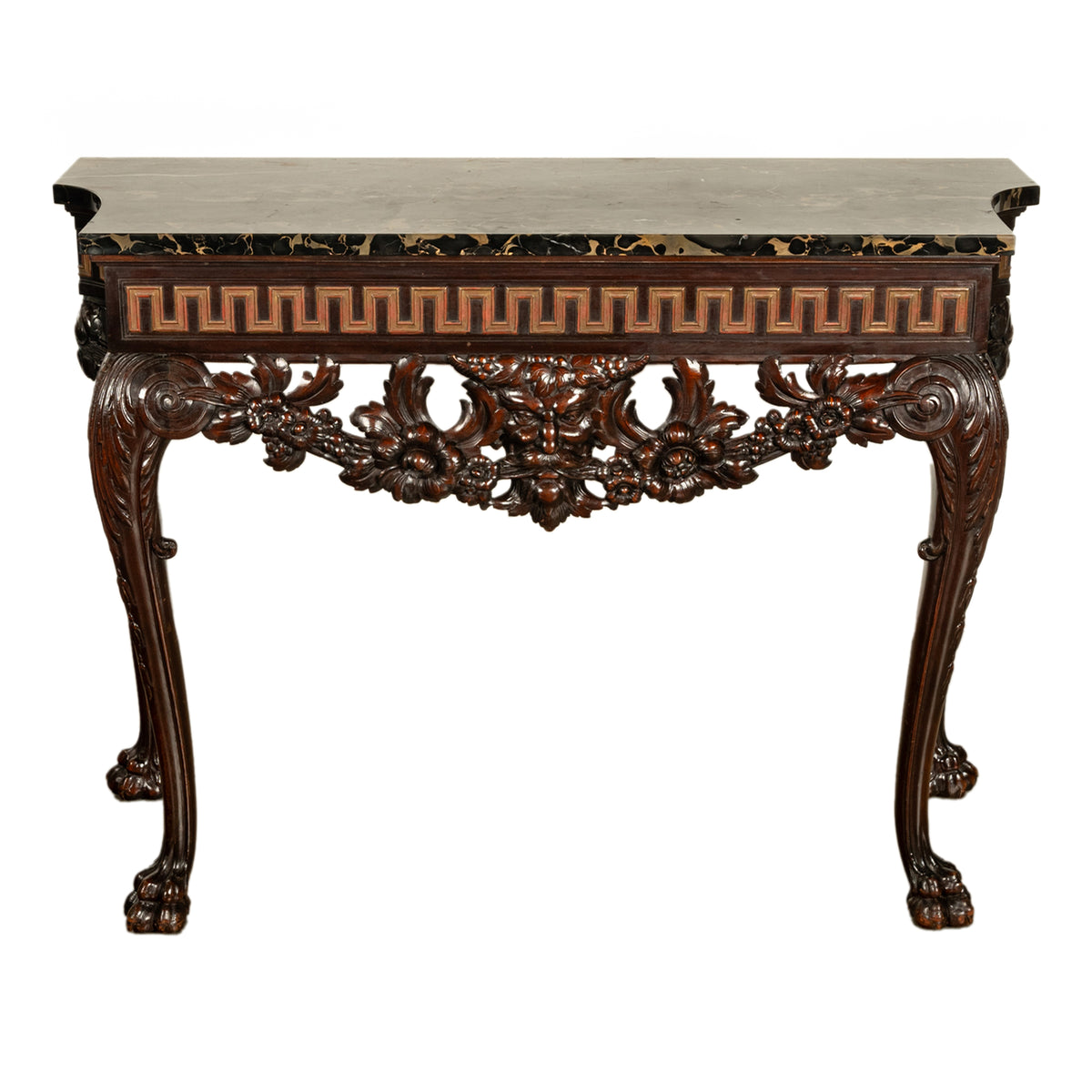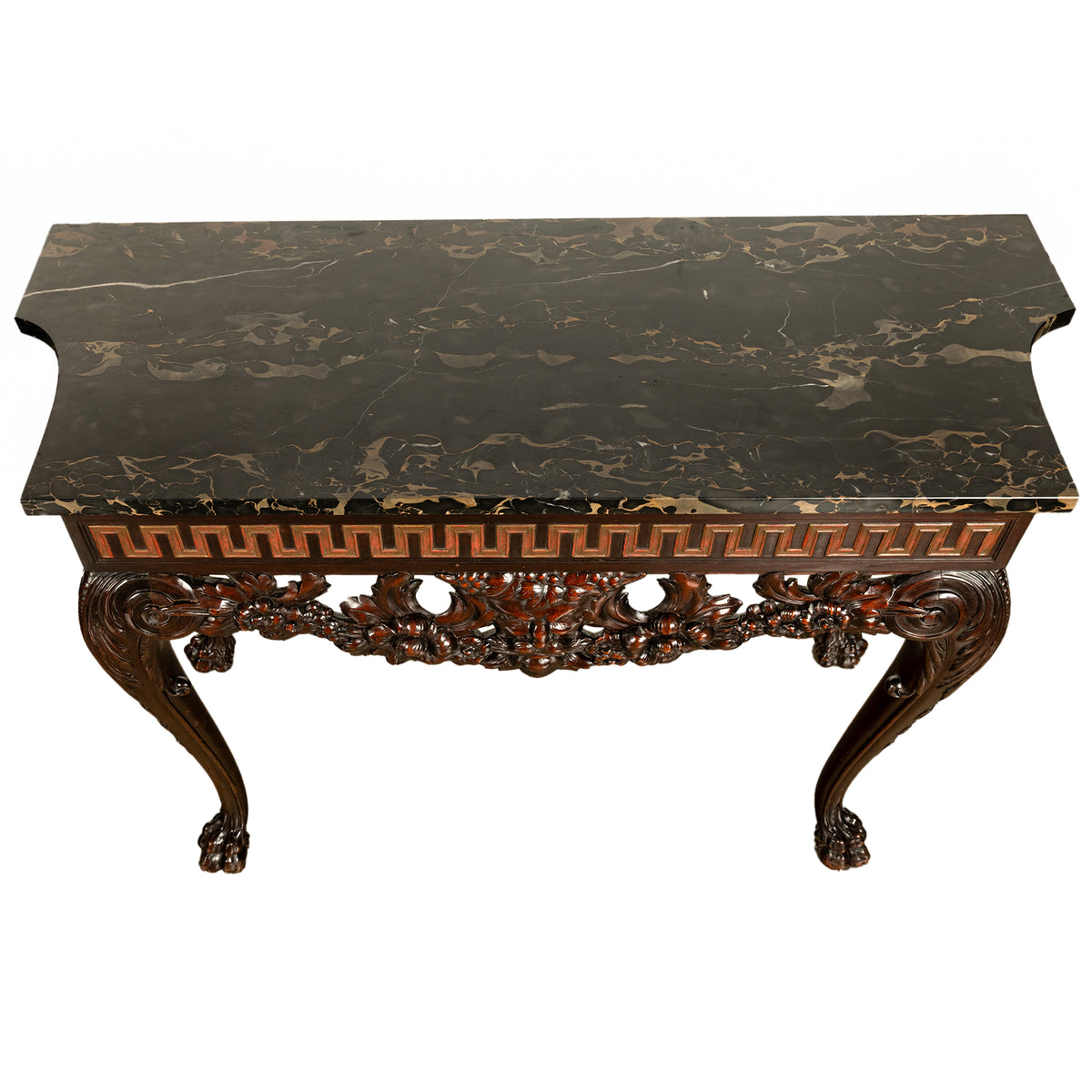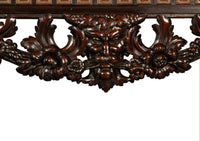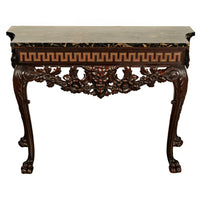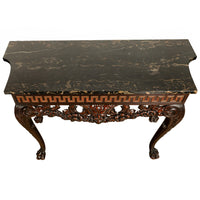Antique English Georgian Carved Mahogany Portoro Marble Console Side Table 1820
- Regular
- $ 8,500
- Sale
- $ 8,500
- Regular
- Unit Price
- per
A fine & rare antique English Georgian carved mahogany Neo-Classical console table, with a Nero Portoro gold veined marble top, in the manner of Thomas Hope (1769–1831), circa 1820.
This striking table displays the skill of a master carver, below the marble top and the sides is a Greek key gilded frieze. The table apron is incredibly carved with a mask of the Greek god Pan to the center, joined with a carved & reticulated garland of leaves & flowers, the table has corresponding carved garlanded aprons to each side. The table legs of cabriole shape are deeply carved with scrolls to the top and carved with acanthus leaves & bell flowers below, and raised on carved lion's paw feet.
The table exemplifies the neo-classical style of the late 18th and early 19th centuries, the Nero Portoro Italian black marble which formed approximately 200 million years ago, its extraction first began at the time of the Roman Empire and is highly prized as one of the most prestigious forms of marble.
This incredible antique table is in excellent condition, no condition issues or restoration. It is one of the finest late Georgian antique console tables one will see and is ready to grace your home.
Thomas Hope was an influential designer, design reformer and collector. A Dutchman, born in Amsterdam in 1769, Hope inherited from his family a tradition of collecting as well as vast wealth from the family bank. He was a collector on a grand scale and also an innovative designer who helped define what we understand as the Regency style (1800–1830).
Hope's extensive Grand Tour travels in Europe, Greece, Turkey and Egypt inspired his interest in antiquities as a source of designs for Regency interiors, furniture and metalwork. He was determined to reform contemporary taste by returning architecture and the arts, including interior design and furniture, to what he conceived as the spirit of classical purity.
Evolving from the Neo-classical style of the 18th century, Regency Classicism was characterised by forms and motifs from ancient Greece and Rome. To these were added elements taken from nature, from the arts of ancient Egypt and from French design of the mid-18th century – a revival of this Rococo style is seen in the use of curved forms and decoration in the shape of rocks and shells. The combination of different patterns and colours made Regency Classicism a visually rich style.
Imperial
ches high × ches wide × ches deep
Metric
high × wide x deep
Displayed rates are for shipping in the Continental U.S. and Canada. For other locations, kindly contact us and we will provide the most competitive shipping price available. All shipments are professionally packed and shipped insured with full tracking capabilities. Customers are also welcome to collect their items from our warehouses or arrange their own shipping.

